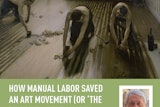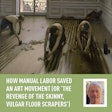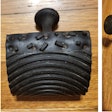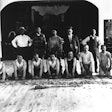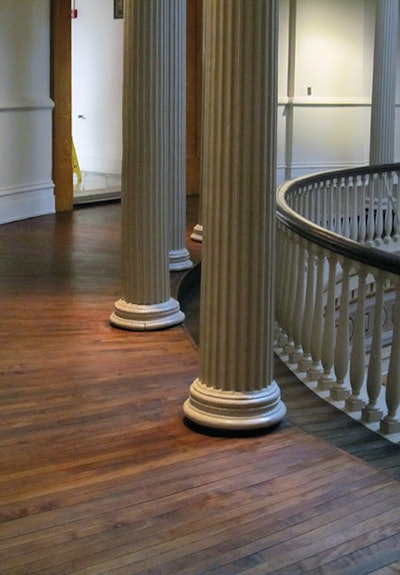

 Courtesy National Park Service
Courtesy National Park Service
The Old Courthouse in St. Louis, the very location that a slave named Dredd Scott would receive his freedom only to have it revoked years later by the Missouri and U.S. Supreme Courts, has a beautiful pine floor dating almost to Scott's time.
Standing in the middle of the Old Courthouse rotunda and looking up, Scott would have seen a domed ceiling and, below that, three stories of balconies. All were replaced some time after the U.S. Supreme Court decided Scott was to stay a slave in 1856. Then, in 1869, a pine floor that radiates from the center of the rotunda to the exterior wall was installed on each balcony. The floor boards taper from 2½ inches at their widest to 2 inches at their narrowest.
The rotunda before and after Scott's time was a popular place to give public speeches, according to Bob Moore, Old Courthouse historian, and citizens would pack onto the balconies and hang over the balustrades to listen to orators like Missouri's U.S. Senator Thomas Hart Benton argue that the transcontinental railroad should access the Pacific Ocean coast via St. Louis.
Nails were driven through the face of boards that became unruly across generations. But it's that history that makes the floors worth seeing. "It's a patina of age," Moore says. (The Old Courthouse is located at 11 N. Fourth St., eight blocks from the Edward Jones Dome.)










